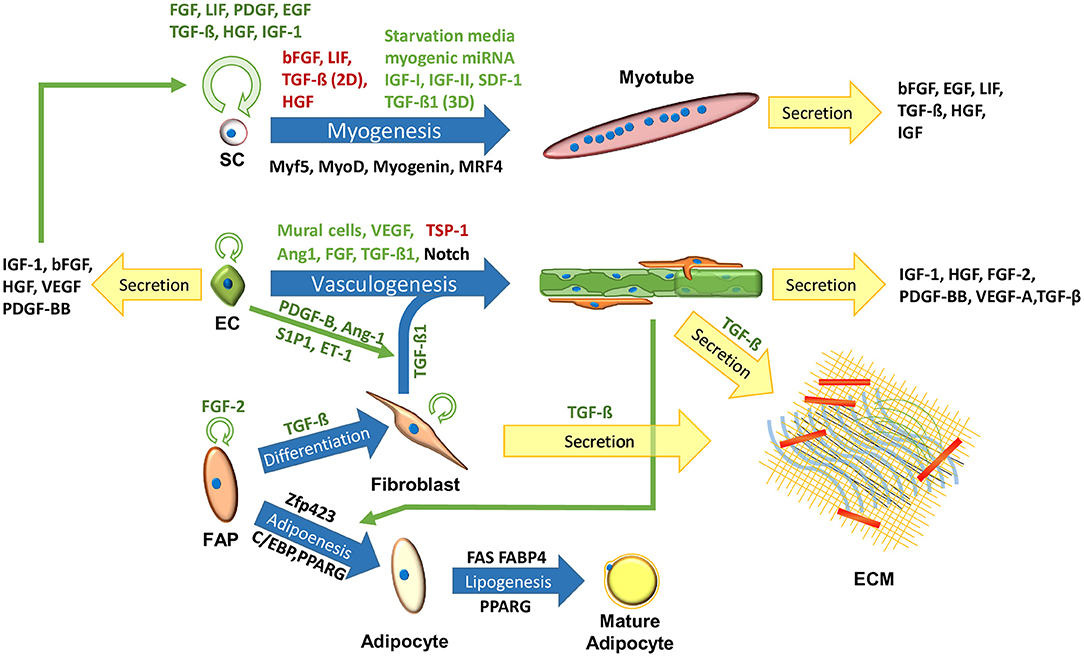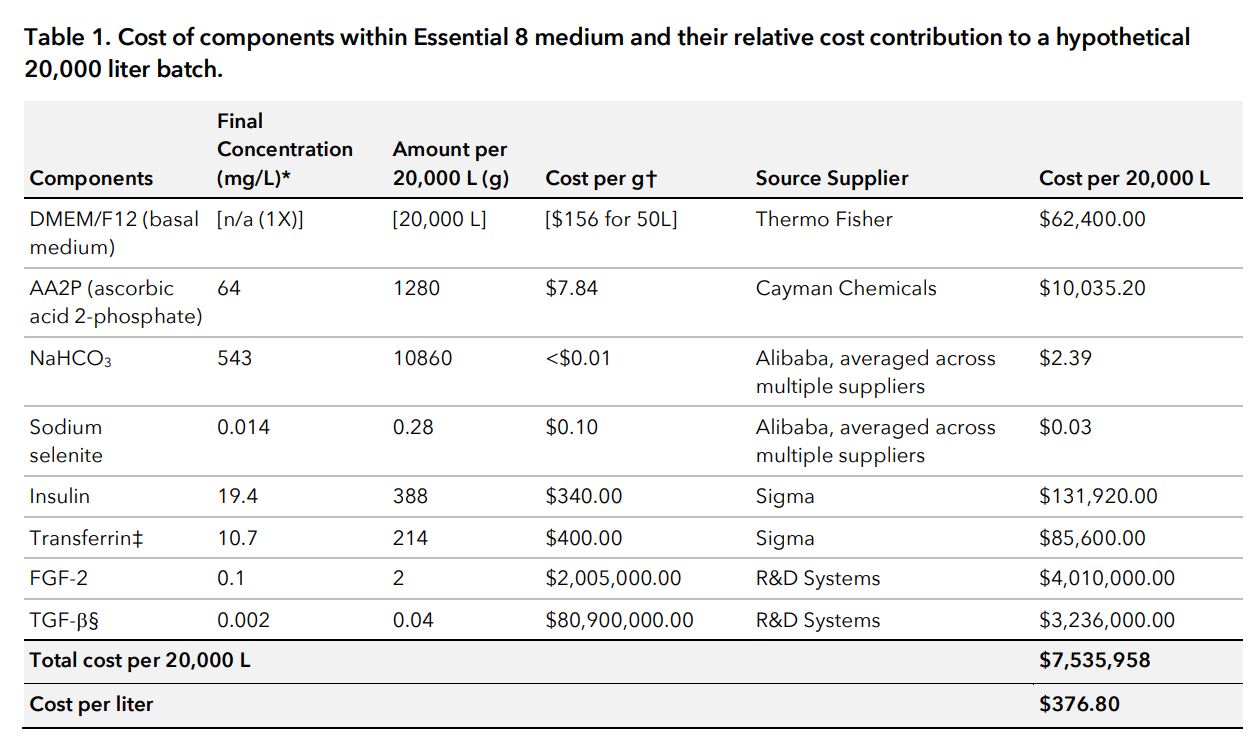
How to drive down the cost of cultured meat?
Cultured meat, lab-grown meat, or clean meat refers to the meat grown in the petri dish or bio fermenter, harvested, and further processed as a replacement for farm-raising animals. Initially, it may sound like a crazy idea, however, it's a futuristic solution raised in an attempt to solve the issue of meat supply shortage, and water resources shortage by Dr. Mark Post in 2013.
After years of development by companies around the world, as of 2022, the cost to produce cultured meat remained high. It is mainly because the culture medium, originally used for pharmaceutical use, is now used for food production. 1 kg of cultured meat on average required 13L of culture medium, which cost around USD4,898 (USD376.8/L* 13L) (Specht, L., 2021).
The cost structure of culture medium
Culture medium generally contains amino acids, vitamins, inorganic salt, glucose, growth factor (hormones), and other nutrients required for cell growth. Of these, growth factors are the most important content of culture medium.
Typically, growth hormones are purified from the fetus of cattle. However, the finite and limited number of calves leads to extravagant unit prices, companies are striving to look for alternative growth media at a cheaper price.
Growth factors that are used for cultured meat production

Figure 1. Satellite cells (SC), Endothelial cells (EC), and fibro-adipogenic progenitor cells (FAPs). Markers, inhibitors, and enhancers of cells are shown in black, green, and red font in the figure. (Ben-Arye et al, 2019)
To grow cultured meat with mimic taste, texture, and smell, three different types of cells are grown: Satellite cells matured into myotubes of muscle fibers, endothelial cells matured into vascular tubes, fibro progenitor cells provide texture, adipogenic progenitor cells aids in the richness of flavor.
Common enhancers include bFGF, LIF, HGF, and TGF-beta, whereas FGF, LIF, and TGF-b1 are the inhibitors of cell progression.
According to a research study done by Dr. Liz Specht from Good Food Institute, the cost structure of culture medium is hypothesized as follows (Specht, L., 2021):
FGF and TGF-beta alone account for nearly 97% of the medium cost and are the major costing factors. Specialized manufacturers provide GMP-grade recombinant protein, and can significantly drive down the cost of the medium. If the cost of 1 gram of FGF-2 goes down from USD1 million to USD150,000, the cost of 20,000 liters medium goes down to USD 4,387,558, which is about 58.2% of the original cost (USD7,535,958).
As Dr. Post Mark said, with many implications cultured meat could solve, there are still technical, financial, and organizational challenges. With the advancement of cultured meat technology with better quality and cheaper production cost, cultured meat will have a wider market appeal.
About Algapharma
Algapharma Biotech Corp holds the core technology in bulk protein production, purification, and protein conjugation. Collaborated with world-leading expertise in large-scale microalgae cultivation by Far East Microalgae Ind. Co. Ltd (FEMICO), Algapharma is the world-leading supplier of phycobiliprotein and its conjugate.
Reference:
- Specht, L. (2021, January). An analysis of culture medium costs and production volumes for cultivated meat. Good Food Institute. Retrieved May 13, 2022, from https://gfi.org/wp-content/uploads/2021/01/clean-meat-production-volume-and-medium-cost.pdf
- Ben-Arye, T., & Levenberg, S. (2019). Tissue Engineering for Clean Meat Production. Frontiers in Sustainable Food Systems, 3. https://doi.org/10.3389/fsufs.2019.00046






